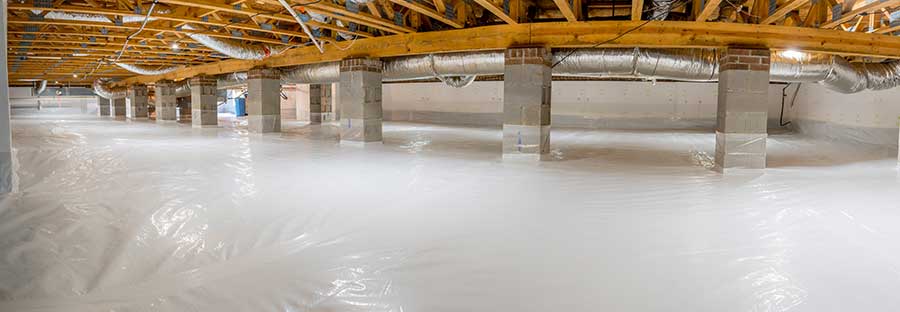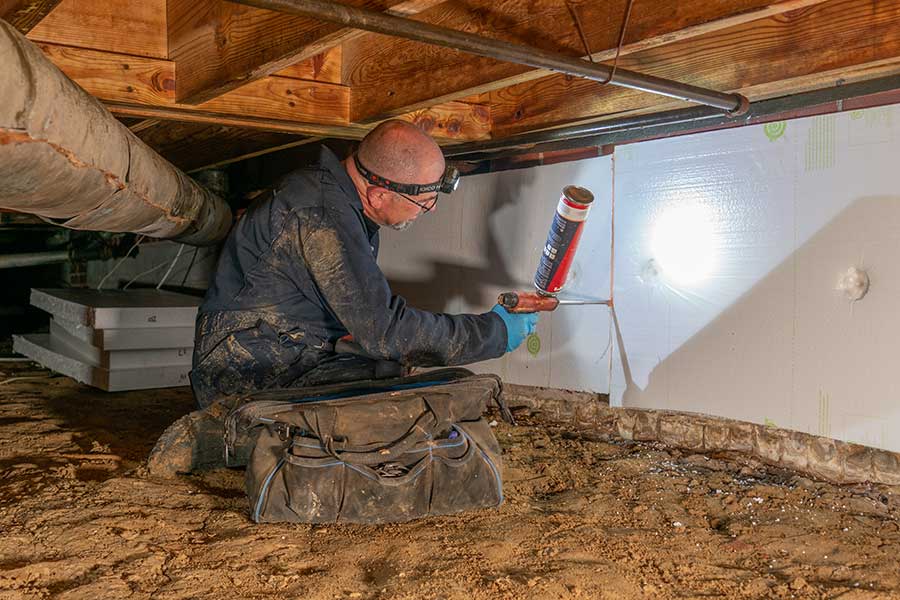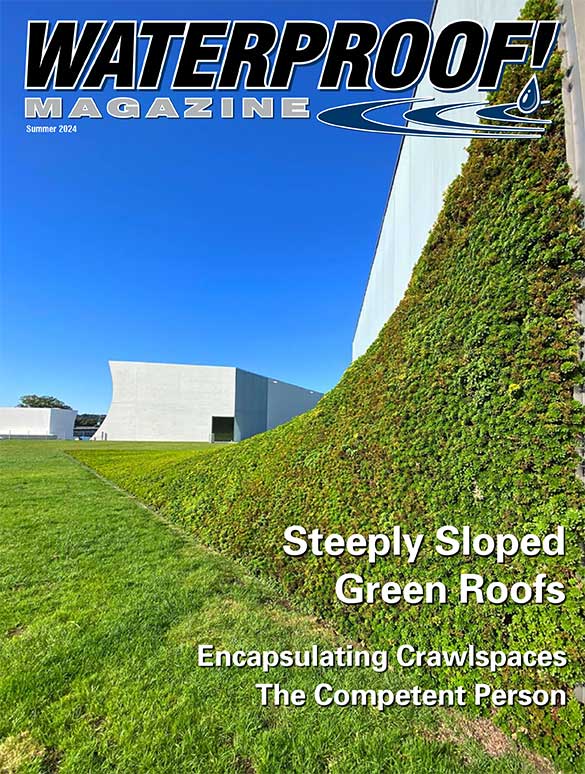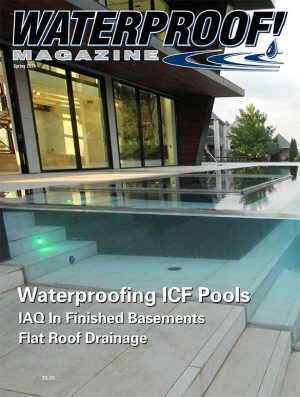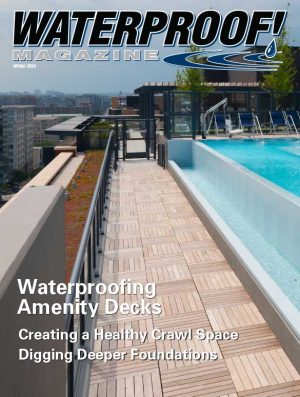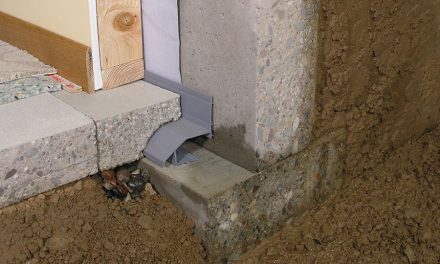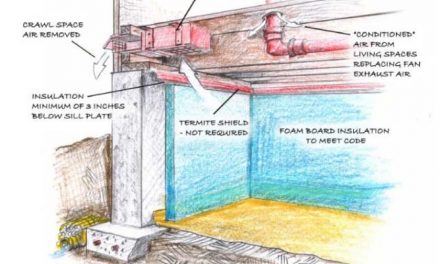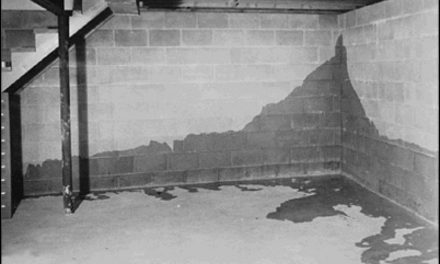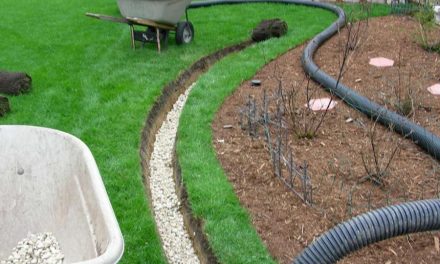By Vanessa Salvia
Photos courtesy of CrawlSpace Depot
For many homeowners, the crawlspace is an out-of-sight, out-of-mind area. However, leaving this space unchecked can lead to moisture problems, poor indoor air quality, and wasted energy. Properly enclosing the crawlspace is crucial for protecting your home’s health and efficiency.
Billy Tesh, the president of CrawlSpace Depot, shares his insights on tackling this important home improvement project. “First thing you need to do is research the codes and specifications of your area,” says Tesh. “Most of them are pretty close to the same, but there might be slight variations.”
Conducting Due Diligence
Before enclosing any crawlspace, Tesh emphasizes the importance of thoroughly inspecting the area. “You want to perform a very thorough inspection, making sure the crawlspace doesn’t have water infiltration issues, grading problems on the outside, or waterproofing issues that need to be addressed,” he advises.
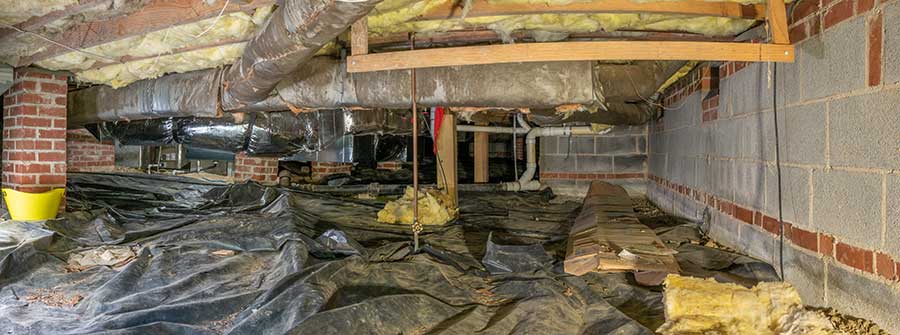
Every encapsulation job must be thoroughly inspected before the job starts. Some may end up needing additional drainage work, mold remediation, or debris cleanup. Insulation may need to be removed, such as in this crawlspace. Understand what’s involved with the job prior to proposing and starting the work.
Attempting to enclose a crawlspace with existing moisture problems can lead to disastrous results, as Tesh colorfully warns. “The worst thing you can do is install a closed crawlspace and end up with a swimming pool or waterbed in someone’s crawlspace.”
The inspection should also check for any other issues that may need remediation, such as termites, wood rot, fungal growth, radon, plumbing leaks, or combustion appliances in the crawlspace. “Addressing those, and making sure the homeowner is aware that if it exists, they should address it accordingly, whether it’s treatment by a professional company or by the company that’s doing the actual encapsulation,” says Tesh.
Proper Encapsulation Process
Once any existing issues have been identified and resolved, the crawlspace can be properly sealed and encapsulated. Tesh outlines some of the key steps:
“You need to make sure that whatever you’re using in that closed crawlspace application encapsulation process meets those codes. If you’re insulating the exterior walls, you need to make sure the insulation material you would be utilizing would need to have that type of certification.”
Materials like insulation boards and vapor barriers must be mechanically fastened to the crawlspace walls and sealed. “Most codes will say it must be mechanically fastened to the foundation wall,” notes Tesh. “ You want to make sure that you’re getting a really good seal of that crawlspace soil and foundation wall to prevent moisture from entering the crawlspace environment And then, of course, sealing any exterior openings, whether plumbing chases or HVAC penetrations, they should be sealed up with foam and pest-proofed.”
Maintaining Proper Conditions
Enclosing the crawlspace alone is not enough — the space also needs a way to control moisture levels and air exchange. “Most codes will require some drying mechanism over the crawlspace,” says Tesh. “For instance, an air inducer utilizing a metered amount of air from the HVAC system introduced into that crawlspace area, a dehumidifier rated for commercial crawlspace use, or you can introduce conditioned air from within the house into the crawlspace.”
Tesh emphasizes that closing the vents is crucial for maintaining the proper conditions. “Crawlspaces don’t perform well when ventilated the way they used to,” he explains. “The reason is that there is a different thermodynamic condition between the crawlspace and the house now, which is caused by air conditioning. This cools the floor system and that ends up sweating and becomes a condensation point for this humid air in the summer.”
Although it’s not as much of a problem as it was 20 years ago, Tesh says to be aware of combustion appliances within the crawlspace, such as a gas furnace. In that type of situation, an HVAC company needs to be involved. “In some cases, it’s a two-pipe system and they just need to run the pipe to the outside,” he explains. “But that professional should look at it and understand what needs to be done and do that prior to sealing up the vents and sealing up the exterior elements of that structure. Otherwise, you could risk having a possible explosion or a failure of that HVAC unit because it’s drawing a lot of oxygen out of the atmosphere.”
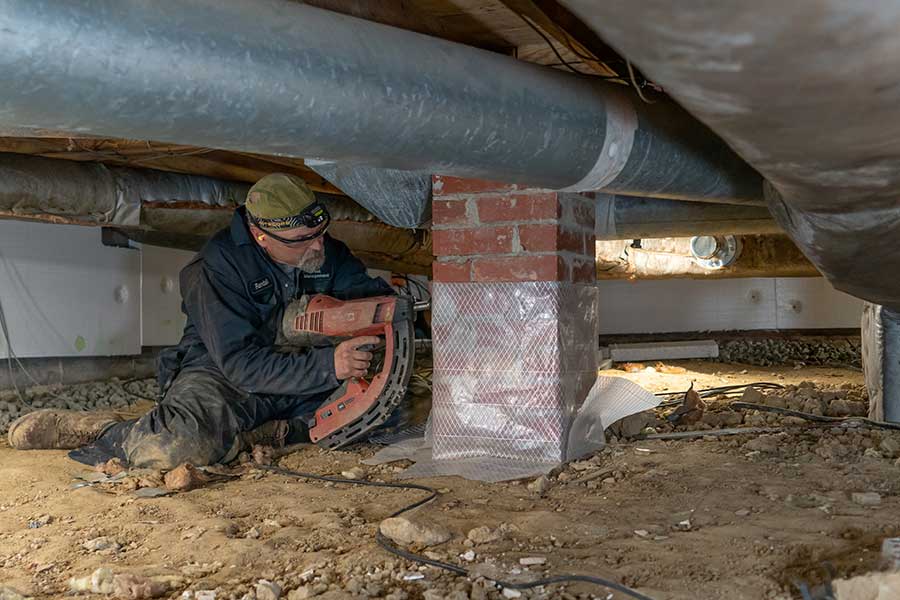
Beginning-to-end photos of encapsulating a basement with piers. Here, piers are being wrapped with a clear liner.
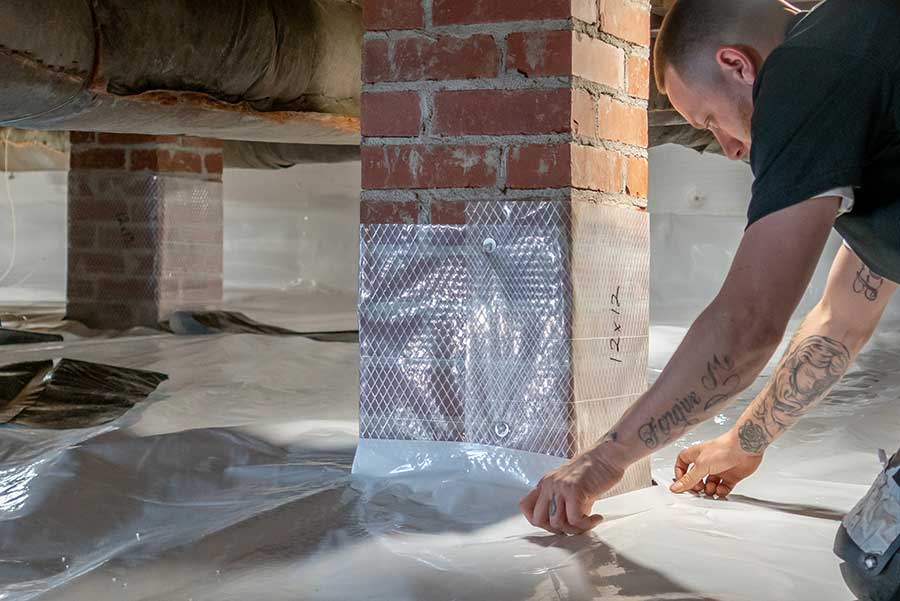
Taping the seams between the 10-ml translucent wall liner and the white wall liner to ensure a proper seal.
Advantages of Enclosing a Crawlspace
Many building codes now require closed/encapsulated crawlspaces on new construction for moisture management and energy efficiency reasons. But for homes that are already built, there are a lot of advantages to enclosing the crawlspace that is already there. As much as 60% of the bad air in your house can originate from an unconditioned crawlspace. Enclosing and sealing off the crawlspace prevents moisture, contaminants, and musty air from entering the living space. Enclosing reduces energy losses and improves HVAC efficiency.
An enclosed crawlspace prevents exterior moisture from entering and allows for dehumidification equipment to better control moisture levels inside. By controlling moisture, encapsulating addresses issues like fungal growth and musty odors that can impact indoor air quality and occupant health, according to Tesh.
Enclosures are sealed up, which makes them pest-proof, which helps prevent pests like rodents and insects from entering. All of these protective measures help to create an overall healthier living environment.
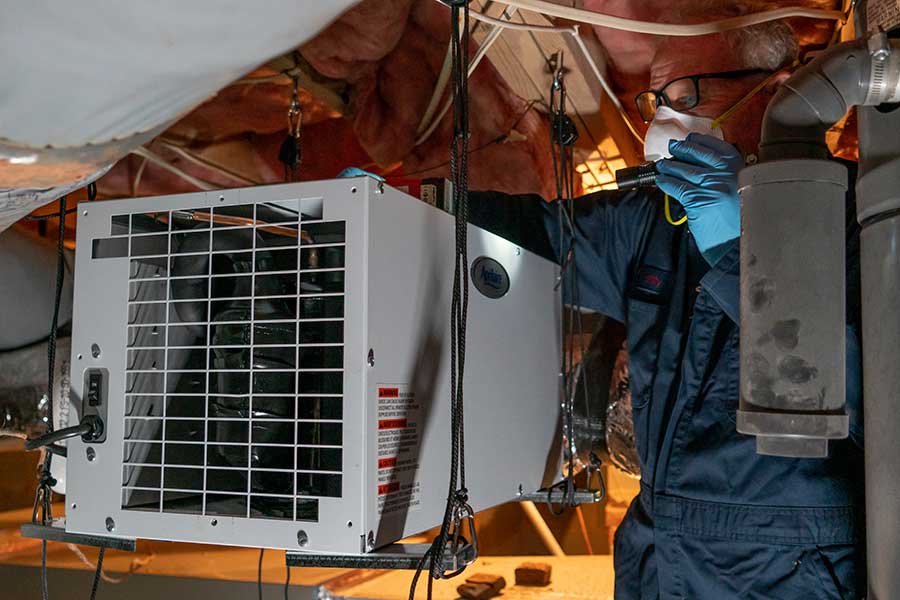
Billy Tesh is ensuring the dehumidifier is level. The dehumidifier is being hung from the floor joists and won’t drain properly if it is not level.
Comprehensive Solutions
For those feeling overwhelmed by the prospect of enclosing their crawlspace, companies like CrawlSpace Depot offer comprehensive solutions. “We sell everything to get the job done — crawlspace liner, tape, insulation board, dehumidifiers, moisture monitors, LED lights for the crawlspace, and more,” says Tesh. “CrawlSpace Depot is your one-stop source for anything crawlspace related.”
In addition to products, they also provide valuable education and training. “We offer full training courses, online or in-house,” mentions Tesh. The benefits of a properly enclosed crawlspace are numerous, including improved indoor air quality, energy savings, and a healthier living environment. As Tesh summarizes, “Research proves that there was about a 15 to 18% savings on heating and air conditioning costs over a vented crawlspace compared with a closed crawlspace.”
Summer 2024 Back Issue
$4.95 – $5.95
Properly Encapsulating a Crawlspace
The Competent Person
Pushing the Envelope: Steeply Sloped Green Roofs
Transforming Foundations with Fluid-Applied Membranes for Superior Protection
Description
Description
Properly Encapsulating a Crawlspace
By Vanessa Salvia
For many homeowners, the crawlspace is an out-of-sight, out-of-mind area. However, leaving this space unchecked can lead to moisture problems, poor indoor air quality, and wasted energy.
The Competent Person
By Gregory Fahrenbruch
When dealing with asbestos, OSHA has requirements for what is considered “a competent person.” Having awareness training is good, but be aware of whether the person giving you advice is actually “competent.”
Pushing the Envelope: Steeply Sloped Green Roofs
By Richard Hayden, GRP, ASLA Emeritus
Architects continue to push the boundaries of design and construction, and the roof is no exception. The roof was once the repository of HVAC equipment and other building utility equipment. No more.
Transforming Foundations with Fluid-Applied Membranes for Superior Protection
By Emily Newton
Managing moisture is one of the most persistent challenges in building foundations and basements. While many professionals opt for simple dampproofing in this sphere, it’s becoming increasingly common to go further. Opting for fluid-applied waterproofing instead can bring considerable value to a project.
Additional Info
Additional information
| Weight | N/A |
|---|---|
| Magazine Format | Digital Download Magazine, Print Mailed Magazine |

